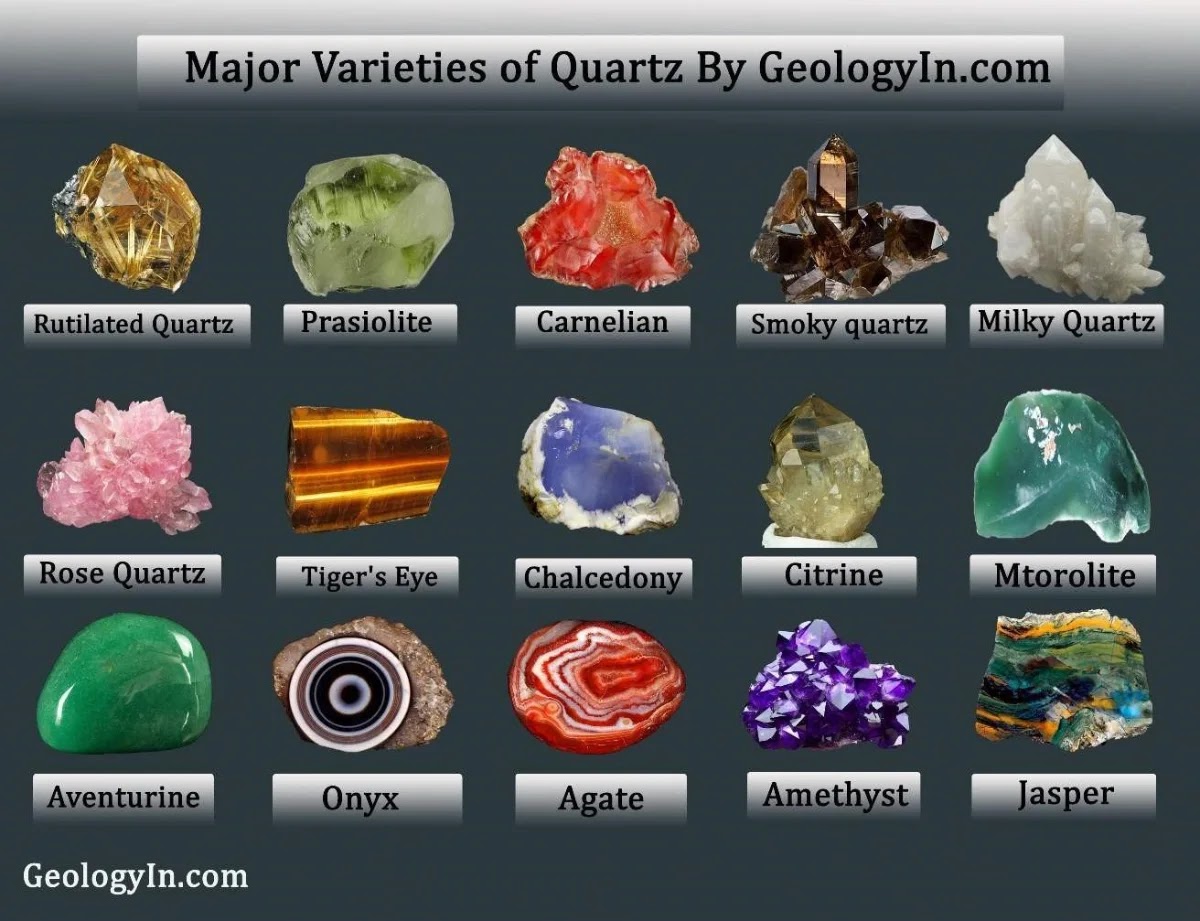Faden Quartz: Meaning, How Does It Form
Faden Quartz is a unique variety of quartz crystal known for its distinctive feature: a thread-like or string-like inclusion that runs through the crystal, which is often white and can be seen within the typically clear or slightly milky body of the quartz.
The term faden is a German word for "thread". They are found in the Alpine region of Europe, Pakistan, Russia and Arkansas.
Quartz crystals inside the host rock will rupture when the fissure opens. In a silica rich solution, this rupture will heal quickly, forming a crystal that is attached to the opposing rock walls and bridges the new opening. While the fissure continues to open steadily, the crystal will also continue to crack and heal.
They are found in areas of low grade metamorphism in which cavities in the rock are growing. When these zones grow, the quartz crystals in them are broken (repeatedly), and the healing and regrowth incorporates fluid and gaseous inclusions ( the white threads). The edges of the crystals grow faster and incorporate the liquid inclusions in the center of the crystals.
 |
| What Is Faden Quartz, and How Does It Form? |
Because growth is much quicker on fractured surfaces than on regular faces and because it leads to small regular faces on the opposite conchoidal fracture surfaces that do not perfectly match, some of the growth solution is included in the crystal.
The repeated rupturing and healing leaves a scar of liquid and gas inclusions in the crystal: a white thread, the "faden". In rare cases, the faden is covered by chlorite, which demonstrates beautifully that a now platy specimen did indeed start as a thin thread.
The thread can be seen best in crystals that grew parallel to the wall, because the speed of growth is usually larger along the crystals c-axis (from tip to tip). These faden quartzes usually assume a platy shape. Faden quartz crystals that grew perpendicular to the walls, so that the tips point to the rock wall, do not get platy. The thread is usually straight, but depending on the movement of the opposing rock walls, may also be curved, jagged or interrupted.
 |
| Faden Quartz |
Faden Quartz Properties
Composition: Primarily quartz (SiO2) with a characteristic "thread-like" inclusion, often described as a "spirit line" or a "healing thread." This inclusion is usually composed of muscovite (KF)₂(Al₂O₃)₃(SiO₂)₆. or rutile (TiO₂).
Color: Faden Quartz itself is typically clear or white, while the "spirit line" inclusion can be white, transparent, or slightly opaque.
Luster: Vitreous (glassy), both for the quartz and the inclusion.
Crystal System: Trigonal for the quartz, and monoclinic for the muscovite or rutile inclusion.
Streak: White for both the quartz and the inclusion.
Hardness: 7 on the Mohs scale for the quartz.
Crystal Form: Faden Quartz typically forms in prismatic or columnar crystals, with the "spirit line" inclusion running parallel to the long axis.
Density: 2.65 g/cm³ for the quartz, and 2.76-3.1 g/cm³ for the muscovite inclusion. Rutile is denser, at 4.2-4.3 g/cm³.
Transparency: Transparent to translucent for the quartz, and opaque to translucent for the inclusion.
Fracture: Conchoidal for the quartz, and uneven for the muscovite inclusion. Rutile has a subconchoidal fracture.
Specific Gravity: 2.65 - 2.85 g/cm³
Solubility: Insoluble in water and acids.
Fluorescence: Usually none, but some varieties may show weak fluorescence under ultraviolet light.
Pleochroism: None for the quartz, but the muscovite inclusion can exhibit weak pleochroism. Rutile can show strong pleochroism in some cases.
Refractive Index: 1.544 - 1.553 for the quartz, and 1.560-1.590 for the muscovite inclusion. Rutile has a higher refractive index of 2.616-2.903.
Inclusions: The defining feature of Faden Quartz is the presence of the "spirit line" inclusion. This inclusion can vary in size and thickness, but it is typically white, transparent, or slightly opaque.
Faden Quartz Meaning
Connection: The name "Faden" means "thread" in German, symbolizing connection. This crystal is often associated with connecting people, linking the physical with the spiritual, or bridging different dimensions or states of consciousness.
Healing: Faden Quartz is considered excellent for healing, particularly where there's a need for connection or reconnection, like mending relationships or healing physical breaks in the body (e.g., bones or ligaments).
Spiritual Growth: It's believed to enhance meditation, facilitate spiritual growth, and help in accessing information about Earth's history due to its formation process capturing moments in geological time.
See also:
Types of Agate With Photos
The Major Varieties of Quartz (Photos)
Types of Mineral Inclusions with Photos








